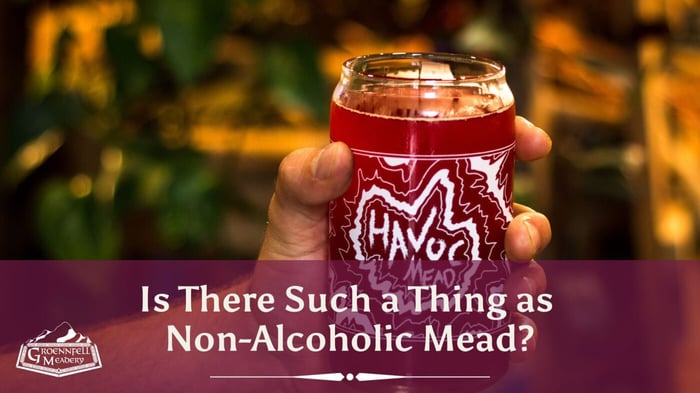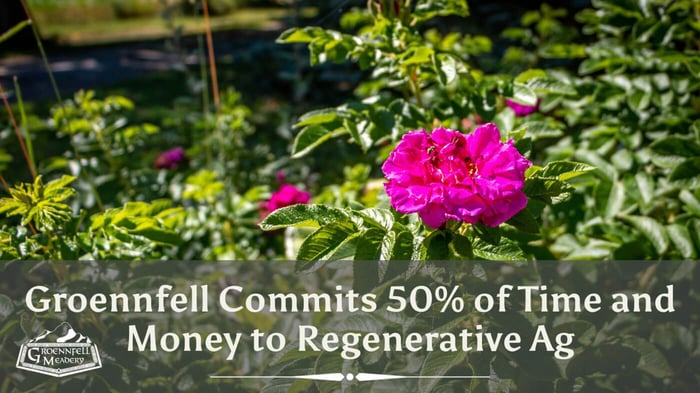Now that we've settled whether or not non-alcoholic mead even exists (it does!) you probably want to try your hand at making some!
In this article, we discuss the basics of non-alcoholic mead and how to come up with your own recipes, as well as a few safety tips!

Is Non-Alcoholic Mead Safe?
It certainly is as long as you follow some basic food-safety practices!
To make sure that your non-alcoholic mead is safe for everyone:
- Always work with clean, sanitized equipment and bottles.
- Use only pure honey, raw is even better. This will guarantee that the pH and yeast profile are helping to keep your beverage safe.
- Never give honey products to children under one year of age. While this beverage could theoretically be rendered safe for infants, why bother? I'm pretty certain there are no pediatricians who recommend giving sugar-sweetened and non-alcoholic cocktails to babies.
- Be very attentive to the firmness of the bottles when they're carbonating. This will make sure that A) the bottles don't pop and B) the mead doesn't become too alcoholic.
- Always use plastic bottles for the carbonation step. We're not huge fans of plastic bottles over here at Groennfell, but this is a case where they really come in handy. Plus you'll be upcycling!
- Never add any ingredients that aren't safe to consume raw. This should be a no-brainer, but y'know... never assume.
What are the Key Components of Non-Alcoholic Mead?
The three things you really need in non-alcoholic mead are honey, something acidic, and bubbles. Let's break it down.
Honey
This should be obvious. Mead (whether alcoholic or non) starts with honey. Since so much of the character of your non-alcoholic mead comes from the honey (and you're going to be using so little of it), this is a great opportunity to use really high-quality local honey.
As mentioned above, raw honey is a better option, not just because it (almost always) tastes better, but also because all of the natural wild yeast will be in there to help create a better product.
Something acidic
We like to use an ingredient here that adds both an acidic component as well as some flavor. Many juices work well, and if you have a juice that's a little higher pH (like grape juice or raisin juice), you can also add some lemon juice or citric acid.
This acidic addition helps create the mouthfeel and other characteristics of a fully fermented mead. You can make a non-alcoholic mead with no added flavor, but you'll still want something acidic like the citric acid mentioned above.

Bubbles (aka Carbonation)
While not all meads have bubbles, low ABV meads (especially very low ABV meads, like this one) need some level of carbonation to brighten them up and give them body.
As you'll see below, these bubbles can be added in two different ways.
Of some interest, Sima, in its earliest versions, was a very low alcohol content mead (sometimes even under 0.5% abv), and you'll notice it has all of these features: honey, raisin, and lemon for flavor, and bubbles.
Getting bubbles into non-alcoholic mead
There are two main ways to get carbonation into your non-alcoholic mead: kegs and plastic bottles.
The keg method is super simple. Put all of the ingredients for your n/a mead into a keg (minus the yeast) and carbonate as usual! Some folks like to use yeast and naturally carbonate in the keg. This works as well, but you're at a higher risk for over-carbonating, so you need to keep a careful eye on it.
The bottle method is also easy but takes a little more attention. After mixing your ingredients together, evenly divide them between plastic bottles (yes, plastic, please see above), then check them every day until they're firm and carbonated. Then, put them in the fridge to chill at least overnight.
Basic Non-Alcoholic Mead Recipe
This recipe makes a one-gallon batch which fills five 1-liter bottles fairly nicely.
Ingredients
- 1 cup of honey (more to taste)
- 1 pinch of salt
- 1 cup fruit juice (we really like V8 Blueberry Pomegranate)
- 1 tbsp lemon juice
- Enough warm water (about 102F) to bring the total to 1 gallon
- 1 packet bread yeast (or D47 wine yeast) [Only necessary if you're making it in bottles rather than kegs.]
Instructions
- Combine all of the ingredients except the yeast in a large bowl and stir until all of the ingredients are combined.
- Let it sit for 15 minutes.
- Stir again to confirm that everything is dissolved in solution.
- Sprinkle the yeast on top and wait 15 minutes. [If bottling rather than kegging.]
- Stir one more time, making sure the yeast is evenly distributed throughout the mixture. [If bottling rather than kegging.]
- Using a funnel, divide the mixture between the plastic bottles or pour it into your keg.
- If kegging, carbonate as usual.
- If bottling, leave the bottles out on the counter and squeeze them every day. As soon as they feel firm, pop them in the fridge. This step could take as little as one day or it might take a week depending on the temperature of your home.
- Allow the mixture to cool down to fridge temperature (at least overnight).
- Enjoy!
How to come up with your own non-alcoholic mead recipe
Using the basic rules above, honey, acid, and bubbles, you can make any non-alcoholic mead you want!
Want to throw some dried cherries in? Go for it! Want to throw a cinnamon stick into each bottle? Why not! If you add a dry ingredient like spices (or even dried fruit), remember that the flavor will get stronger with time, even if it's chilled and sitting in the fridge. Plan accordingly!
Just remember the basic guidelines around safety (don't include any ingredient you wouldn't otherwise feel comfortable consuming) and you should be all set.





